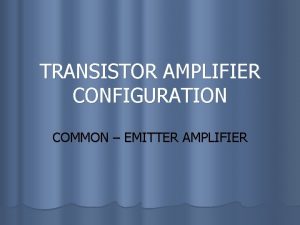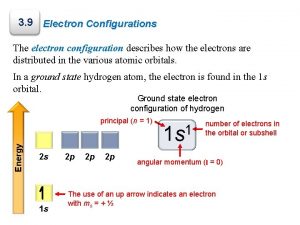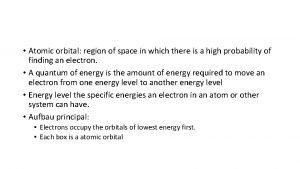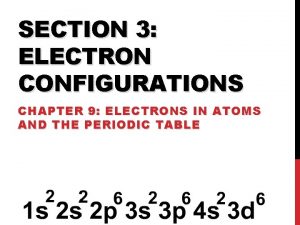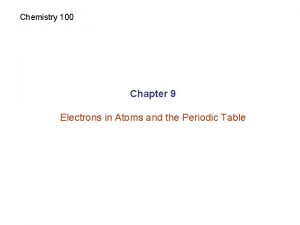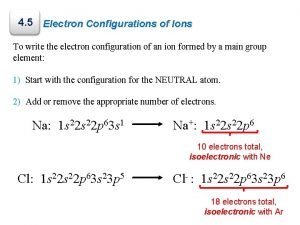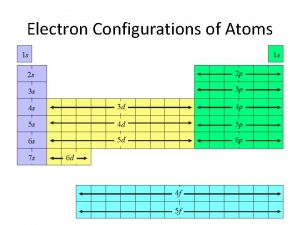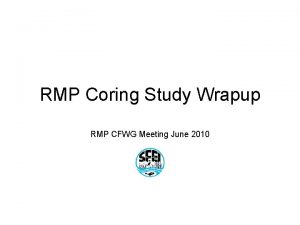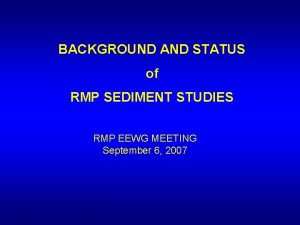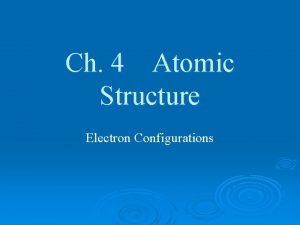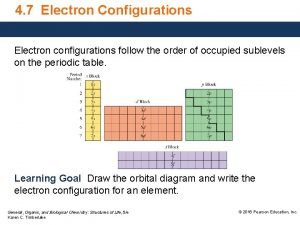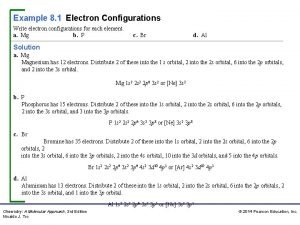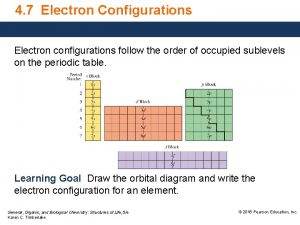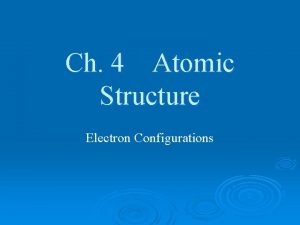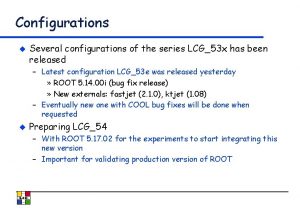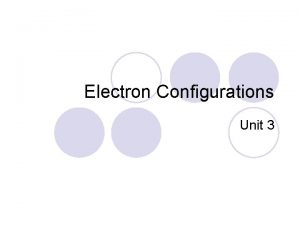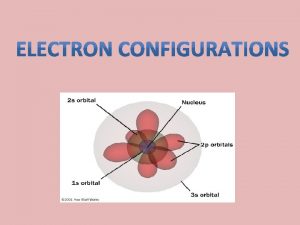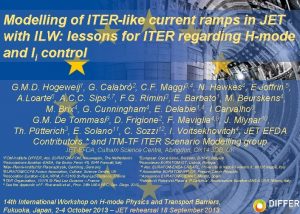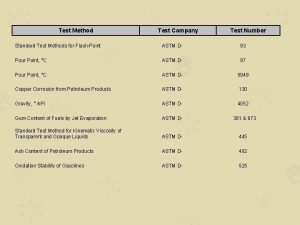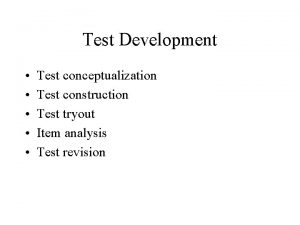Test of the ITERlike RMP Configurations for ELMcrashsuppression





































- Slides: 37

Test of the ITER-like RMP Configurations for ELM-crash-suppression on KSTAR Yongkyoon In 1, 2, A. Loarte 3, H. H. Lee 2, K. Kim 2, J. W. Ahn 4, Y. M. Jeon 2, J. K. Park 5, G. Y. Park 2, M. W. Kim 1, 2, H. Park 1, 2, and the 3 D Physics Task Force in KSTAR 1 Ulsan National Institute of Science and Technology (UNIST), Ulsan, Korea 2 National Fusion Research Institute (NFRI), Daejeon, Korea 3 ITER Organization 4 Oak Ridge National Laboratory, Oak Ridge, U. S. 5 Princeton Plasma Physics Ridge Laboratory, Princeton, U. S. In acknowledgement of the supports by Ministry of Science and ICT for the KSTAR project and by the Research Funds (180056 & 180245) of UNIST(Ulsan National Institute of Science & Technology) “ITER is the Nuclear Facility INB no. 174. The views and opinions expressed herein do not necessarily reflect those of the ITER Organization. ” IAEA-FEC, October 22 - 27, 2018, Gandhinagar,

ITER requires a scheme to spread the divertor heat fluxes with minimum electromagnetic cycling of coils, while sustaining the RMP-driven, ELM-crash-suppression l Application of ELM control coils leads to localized power fluxes at divertor and main wall by thermal plasma and by fast particles (NBI + a’s) A. Loarte (2014) “Rigid rotation of the perturbation solves the problem but causes Excerpted from O. Schmitz et al, NF (2016) large EM cycling of the control coils” 2 Y. In/ FEC 2018

KSTAR has secured robust RMP-driven ELM-crash-suppression, equipped with the capability to measure the divertor heat fluxes • As of 2017, KSTAR accomplished the longest sustainment of RMP-driven ELM-crash-suppression ! Above 30 sec wall q 95~5. 0 • Ultimately, the RMP-driven ELM-crashsuppression would be one of the critical tools to warrant the divertor lifetime with a minimal cost of confinement • Toroidally varying striation pattern needs to be diagnosed even during RMP-driven ELM-crash-suppression Y. In/ FEC 2018 3

The 3 -row in-vessel coils in KSTAR can accommodate various 3 -D configurations in ITER-RMP, including “intentionally misaligned configurations (IMC)” KSTAR In-vessel Control Coils (IVCC): Top/Mid/Bot ITER RMP coils Up to n=2 with 4 coils in each row Up to n=4 with 9 coils in each row Courtesy of G. T. A. Huijsmans Courtesy of K. S. Lee Uniquely equipped with in-vessel mid-RMP coils Y. In/ FEC 2018 4

Outline - Introduction - Divertor heat flux measurement diagnostic Intentionally misaligned 3 -D configurations (IMC) - Impact of 3 -D field configurations on divertor heat flux profiles - 3 -rows vs 2 -rows (Upper/Lower RMPs) - Simple-model comparison (preliminary) - Progress in the compatibility study of RMP-driven, ELM-crash -suppression with detached plasmas - Discussion and Summary Y. In/ FEC 2018 5

Time-resolved ELMy burst has been diagnosed to be peaked up to 50 MW/m 2 near divertor H. H. Lee et al, FEC (2016) Y. In/ FEC 2018 6

Divertor heat flux striation pattern during rotating n=1 RMP is consistent with the field line tracing calculation, including plasma response † K. Kim Po. P 24 052506 (2017) Vacuum (before phase rotating) H. H. Lee et al, IAEA-TM (2017) Ideal plasma response (before phase rotating) Y. In/ FEC 2018 Also, refer to K. Kim et al, Po. P (2017) 7

Intentionally misaligned configurations, with minimal EM loads, have been proposed to reduce EM loading on coils, while effectively diffusing the divertor heat fluxes Phasing (= phase difference between rows) [e. g. UM = M U = 0⁰ – (-90 ⁰ ) = 90 ⁰ ] =+90 ⁰ U M L q + + - 180º 0º f 180º • Reference phasing ( UM = ML= 90 deg): default n=1 RMP • Misaligned configurations: 3 types I. “distorted” ( UM ≠ ML ) II. “away” ( UM = ML> 90 ⁰): kink-aligned III. “toward” ( UM = ML< 90 ⁰) IV. 2 -row (without mid-row): Upper/Lower rows: nearly orthogonal to the 3 -D configuration of 90 deg phasing in vacuum Y. In/ FEC 2018 8

Intentionally misaligned configurations, with minimal EM loads, have been proposed to reduce EM loading on coils, while effectively diffusing the divertor heat fluxes Phasing (= phase difference between rows) [e. g. UM = M U = 0⁰ – (-90 ⁰ ) = 90 ⁰ ] =+90 ⁰ U M L q + + - 180º 0º f 180º • Reference phasing ( UM = ML= 90 deg): default n=1 RMP • Misaligned configurations: 3 types I. “distorted” ( UM ≠ ML ) II. “away” ( UM = ML> 90 ⁰): kink-aligned Y. In et al, APS-DPP (2017); submitted for publication (2018) III. “toward” ( UM = ML< 90 ⁰) IV. 2 -row (without mid-row): Upper/Lower rows: nearly orthogonal to the 3 -D configuration of 90 deg phasing in vacuum Y. In/ FEC 2018 9

“Away” phasing might have been greatly influenced by kinkassociated contributions, but what about “toward” phasing? “Away Phasing” • 3 -D phase space mapping has been successfully benchmarked for RMPdriven, ELM-crash“Toward Phasing” suppression [J. K. Park et al, Nature Physics (2018)] Locking Coil current (k. A) IT=IM=IB Dominantly non-resonant • Divertor heat flux broadening has been observed in the “away” phasing Y. In et al, APS-DPP (2017); submitted for publication (2018) Y. In/ FEC 2018 10

“Away” phasing might have been greatly influenced by kinkassociated contributions, but what about “toward” phasing? “Away Phasing” • 3 -D phase space mapping has been successfully benchmarked for RMPdriven, ELM-crash“Toward Phasing” suppression [J. K. Park et al, Nature Physics (2018)] Locking Coil current (k. A) IT=IM=IB Dominantly non-resonant • Divertor heat flux broadening has been observed in the “away” phasing Y. In et al, APS-DPP (2017); submitted for publication (2018) Y. In/ FEC 2018 11

Outline - Introduction - Divertor heat flux measurement diagnostic Intentionally misaligned 3 -D configurations (IMC) - Impact of 3 -D field configurations on divertor heat flux profiles - 3 -rows vs 2 -rows (Upper/Lower RMPs) - Simple-model comparison (preliminary) - Progress in the compatibility study of RMP-driven, ELM-crash -suppression with detached plasmas - Discussion and Summary Y. In/ FEC 2018 12

“Toward” Phasing in n=1 RMP appears as equally effective as “Away” phasing in terms of ELM-crash-suppression, suggesting a broad optimal phasing “Toward” each other at Upper/Lower rows 3 -rows Rotating RMP ( UM, ML)= (-90, 90); (-85, 85); (-80, 80); (-75, 75); (-70, 70) w. r. t. M =0 deg [e. g. +90 deg phasing (-90, 90)] No RMP U + + - M - + + L - - + + 180º 0º 180º Y. In/ FEC 2018 13

“Toward” phasing in n=1 RMP appears as equally effective in dispersing divertor heat flux as found in “Away” phasing (kink-aligned) 3 -rows Realigned divertor heat flux (19212) Rotating RMP lq =1. 9 mm Radial position at the maximum [mm] Normalized “Toward” dephasing benefits are clearly observed in terms of divertor heat flux dispersal, prior to the loss of ELM-crash-suppression, avoiding mode-locking! Y. In/ FEC 2018 Radial position at the maximum [mm] 14

Newly achieved RMP ELM-crash-suppression using n=1 off-midplane coils has been configured to be operationally perpendicular to conventional RMP configuration 2 -rows Upper/Lower rows (without mid-row): : nearly orthogonal to the configuration of 3 -row 90 deg phasing in vacuum UL =+180 ⁰ UL =-90 ⁰ U + L + + q M q 95 ~ 5. 0 - 180º 0º -80 -75 -70 TB = -90 -85 180º ELM suppression has been demonstrated with a range of phasings of UL = -70 ~ -90 , and sustained during rigid rotation Y. In/ FEC 2018 15

ITER-like 3 -row RMPs have broadened the divertor heat flux during ELM-crash-suppression at the near SOL, which cannot be seen with 2 -rows 19214 19212 A A’ 3 -rows 3 -row 2 -rows Radial position at the maximum [mm] Additional degree of freedom in 3 -rows in RMPs, beyond usual 2 -rows, appears responsible for the broadening of the heat flux near SOL, favorable to the ITER system Y. In/ FEC 2018 16

Outline - Introduction - Divertor heat flux measurement diagnostic Intentionally misaligned 3 -D configurations (IMC) - Impact of 3 -D field configurations on divertor heat flux profiles - 3 -rows vs 2 -rows (Upper/Lower RMPs) - Simple-model comparison (preliminary) - Progress in the compatibility study of RMP-driven, ELM-crash -suppression with detached plasmas - Discussion and Summary Y. In/ FEC 2018 17

Field-line-tracing suggests minimum yn surface, possibly corresponding to the vicinity of the outer striking point No effect on power loads in narrow regions of long connection lengths, attributable to a ‘smearing’ effect due to perpendicular transport [Kobayashi et al, NF (2007); Stangeby & Mitteau, JNM (2009)] Refer to K. Kim et al, Po. P (2017) Y. In/ FEC 2018 18

Although a simple modeling with 3 rows predicts heat flux reduction based on field-line -tracing, the broadened profiles have not been numerically confirmed yet • No spike observed in experiment Simple models e-folding length ~ 15 mm (unperturbed) Need more sophisticated modelling (e. g. EMC 3 -EIRENE) and nonlinear approaches, as well as perpendicular transport Y. In/ FEC 2018 19

High density ELM-crash-suppression has been achieved for n=2 RMP with substantial reduction of divertor heat flux, despite no detachment yet RMP 6. 0 19261 19279 RMP 4. 0 [1019 m-3] 2. 0 2 Da (arb. ) qpeak = 1. 8 MW/m 2 (19261): typical density vs 0. 8 MW/m 2 (19279): high density 1 0 4. 0 3. 5 q 95 = 3. 4 q 95 Measured during the outer strike point sweep at t=9. 0 sec (19261) 7. 5 sec (19279) 3. 0 2. 5 b N 2. 0 1. 5 1. 0 0. 5 0 Vdiv (V) 3 4 5 6 7 8 9 Time (sec) Y. In/ FEC 2018 J. W. Ahn et al, APS-DPP (2017) 20

Simple linear and parallel transport analysis is not sufficient to explain the divertor heat flux broadening mechanism, requiring more sophisticated modeling • Although the 3 -row RMP appears effective in broadening the divertor heat flux, it is possible that the mid-row might have played a bigger role than the other off-mid rows (scheduled for experiments in 2018) Further study needs to demonstrate the RMP-driven, ELM-crash-suppression even with i) low-rotation, ii) ITER-similar-shape (ISS), iii) partially detached plasmas • At the same time, the physics mechanism responsible for the broadening of near-SOL heat flux needs to be answered (in need of more detailed simulations (e. g. EMC 3 -EIRENE) and nonlinear approach) Pure 3 -D field effect or plasma response (e. g. kink or peeling (? )) • Y. In/ FEC 2018 21

Intentionally misaligned configurations are not only compatible with ELM-crash-suppression, but also effective in dispersing the divertor heat flux, while minimizing EM loads on RMP coils • Demonstrated a divertor heat flux broadening by dephasing during RMP-driven, ELM-crash-suppression without driving mode -locking • 3 -row RMPs appeared more effective in broadening divertor heat fluxes than 2 -row RMPs • Simple linear and parallel transport analysis is not sufficient to explain the divertor heat flux broadening mechanism, possibly requiring more sophisticated modelling (e. g. EMC 3 -EIRENE) and nonlinear approaches • ITER-like 3 -row RMPs could be judiciously configured to broaden divertor heat fluxes with minimal EM loads on coils using IMC Y. In/ FEC 2018 22

Back-up Y. In/ FEC 2018

Seemingly dominantly non-resonant configuration in vacuum may turn out to be dominantly resonant configuration in plasma response - - + + IM=0 k. A subspace (off-midplane only) + + - Seemingly ‘Kink-orthogonal’ in vacuum appears dominantly ( = -90 ) ‘kink-aligned’ in plasma response ( = 270 ) K. Kim et al, NF (2017) • Ideal plasma response calculation “predicted first” the ELM-crash-suppression of n=1 ‘off-midplane’ RMPs Y. In/ FEC 2018 24

Slowly decaying nature of n=1 field could be potentially a merit, rather than an obstacle in RMP ELM control in future reactors Previously, ITER RMP control has discarded the option of n=1 RMP due to 1) wide spacing between adjacent islands è high field strength required to meet s. Chirikov > 1 2) hardly decaying into the core plasma, susceptible to mode-locking correct, but not a major hindrance in KSTAR due to low-intrinsic EF ! Likely, KSTAR would be the most suitable device to address the validity of n=1 RMP ELM-control Y. In et al, KSTAR conference (2015) KSTAR specializes in low-n RMP ELM control challenges !!! Y. In/ FEC 2018 [Schaffer et al, NF (2008)] 25

Intentionally misaligned configurations II. “away” from each row ( UM = ML> 90 ⁰): kink-aligned =+90 ⁰ U M L q + + - 180º 0º 180º f Y. In/ FEC 2018 26

Phasing increase toward kink-resonance in n=1 RMP configurations appears quite effective in sustaining the RMP ELM suppression Away from each other (Top/Bot) (19211) ( UM, ML)= (-90, 90); (-95, 95); (-100, 100); (-105, 105) w. r. t. M =0 deg [e. g. +90 deg phasing (-90, 90)] Y. In et al, APS-DPP (2017); submitted for publication (2018) Y. In/ FEC 2018 U + + - M - + + L - - + + 180º 0º 180º 27

As long as mode-locking is avoided, the kink-aligned configuration has been observed to be effective in broadening the divertor heat flux Realigned divertor heat flux contour (19211) Rotating RMP lq =1. 9 mm Reduced peak of heat flux, along with broadened shape, during RMP-driven, ELM suppression is quite favorable to ITER, similarly observed during RMPdriven, ELM mitigation [Y. In et al, NF (2017)] Y. In et al, APS-DPP (2017); submitted for publication (2018) Y. In/ FEC 2018 Normalized 28

Robust ELM-crash-suppression has been successfully developed using either n=1 or n=2 RMPs 15 sec 30 sec wall n=1, = +90 + + - - + + q 95 ~ 5. 0 q 95 ~ 3. 8 Y. In/ FEC 2018 n=2, = +90 + - + - + - Y. M. Jeon et al, APS-DPP (2017) 29

Intentionally misaligned configurations I. “distorted” ( UM ≠ ML ) =+90 ⁰ U M L q + + - ELM-crash-suppression Y. In et al, APS-DPP (2017) - ELM-crash-mitigation Y. In et al, FEC (2016); NF (2017) - 180º 0º 180º f Y. In/ FEC 2018 30

Intentionally misaligned n=1 RMP configurations have been confirmed to be effective in suppressing ELM-crashes ( UM, ML)= (-90, 90); (-95, 85); (-100, 80); (-105, 75); (-110, 70) w. r. t. M =0 deg [e. g. +90 deg phasing (-90, 90)] Fully sustained ELM-crash-suppression during rotating n=1 RMP is attributable to the low intrinsic EF in KSTAR Y. In/ FEC 2018 U + + - M - + + L - - + + 180º 0º 180º Y. In et al, APS-DPP (2017) 31

Given various uncertainties in fixing the outer strike point, the realigned heat flux patterns would help us assess the most stringent conditions on divertor IR camera Hitting the same spot with the peaked heat flux throughout the discharge would be the most severe conditions, which could be regarded as the maximal heat flux on divertor Y. In/ FEC 2018 32

During RMP ELM suppression, the misaligned configurations has reduced the peaks, but no broadening was seen in both static and rotating RMPs NOTE that the exactly same 3 -D configuration during ELM mitigation led to a lowered peak, along with broadened heat flux Divertor heat flux dispersal cannot be extrapolated from ELM mitigation to ELM suppression Rotating RMP lq =1. 9 mm During ELM mitigation During ELM suppression Normalized è Attributable to bifurcated state of ELM suppression Excerpted from Y. In et al, NF (2017) Y. In/ FEC 2018 33

An order of magnitude lower level of intrinsic non-axisymmetry enables us to address 3 D field physics and its uncertainties more rigorously • d. B/B 0 10 -5 10 -4 10 -3 Conv. Tokamaks Y. In et al, NF (2015) KSTAR What about ITER or future reactors ? Y. In/ FEC 2018 10 -2 Stellerator 34

The effectiveness of misalignment is easily understood in the comparison of “wet areas”, leading up to ~20% increase Using “intentionally misaligned” RMP configurations, the merit of dephasing is shown in reducing the peak, as well as dispersing heat flux on a wider area Y. In/ FEC 2018 35

Lower q 95 ELM-crash-suppressions, close to ITER (q 95~3. 1) have been newly established in KSTAR using low-n RMPs ECE density cutoff n=1, = +90 q 95 = 4. 0 q 95 = 3. 4 n=2, = +90 + - + - + + - - + + Demonstrated the established methodology of low-n RMP-driven, ELM-crash-suppression would be applicable to ITER-relevant low-q 95 regime Y. In/ FEC 2018 36

Edge resonant components decoupled from core counterparts allow us to predict an optimal window for n=1 RMP-driven ELM-crash suppression, while avoiding mode-locking n=1, = +90 Polar plot of (IMID, ϕ) with IU=IL=5 k. A and ϕ=ϕUM=ϕML + + - - + + Minimize resonant d. B impacts in core, while maximizing RMP at edge Y. In et al, NF (2017); J. K. Park et al, to appear in Nature physics (2018) Y. In/ FEC 2018 37
 Eion equation
Eion equation Amway vs rmp
Amway vs rmp Psm vs rmp
Psm vs rmp Duties of rmp
Duties of rmp Latch state smooth muscle
Latch state smooth muscle Standard axle load for pavement design
Standard axle load for pavement design Transistor amplifier configurations
Transistor amplifier configurations Copper subshell configuration
Copper subshell configuration What does electron configuration mean
What does electron configuration mean Electron configuration and periodicity
Electron configuration and periodicity Calcium ion formula
Calcium ion formula Stable electron configurations are likely to contain
Stable electron configurations are likely to contain Stable electron configurations are likely to contain
Stable electron configurations are likely to contain Copper subshell configuration
Copper subshell configuration Electrons configurations
Electrons configurations Electrons configurations
Electrons configurations Electron configuration for ions
Electron configuration for ions Stable electronic configuration
Stable electronic configuration Bipolar transistor configurations
Bipolar transistor configurations Ceedar innovation configurations
Ceedar innovation configurations Formuö
Formuö Novell typiska drag
Novell typiska drag Tack för att ni lyssnade bild
Tack för att ni lyssnade bild Returpilarna
Returpilarna Varför kallas perioden 1918-1939 för mellankrigstiden
Varför kallas perioden 1918-1939 för mellankrigstiden En lathund för arbete med kontinuitetshantering
En lathund för arbete med kontinuitetshantering Kassaregister ideell förening
Kassaregister ideell förening Personlig tidbok
Personlig tidbok Sura för anatom
Sura för anatom Densitet vatten
Densitet vatten Datorkunskap för nybörjare
Datorkunskap för nybörjare Tack för att ni lyssnade bild
Tack för att ni lyssnade bild Att skriva debattartikel
Att skriva debattartikel För och nackdelar med firo
För och nackdelar med firo Nyckelkompetenser för livslångt lärande
Nyckelkompetenser för livslångt lärande Påbyggnader för flakfordon
Påbyggnader för flakfordon Tryck formel
Tryck formel Svenskt ramverk för digital samverkan
Svenskt ramverk för digital samverkan






